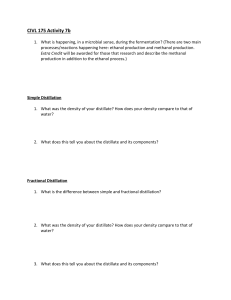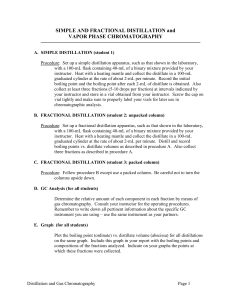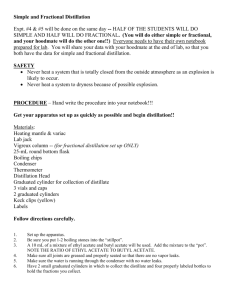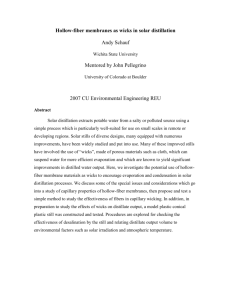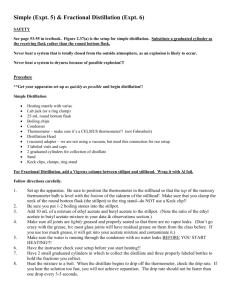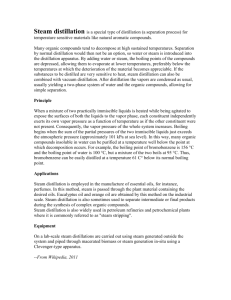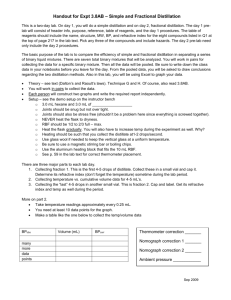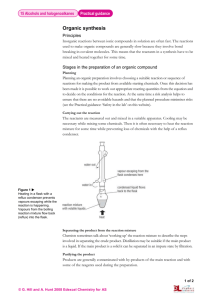Steam Distillation Lab: Extracting Oils from Orange Peel
advertisement
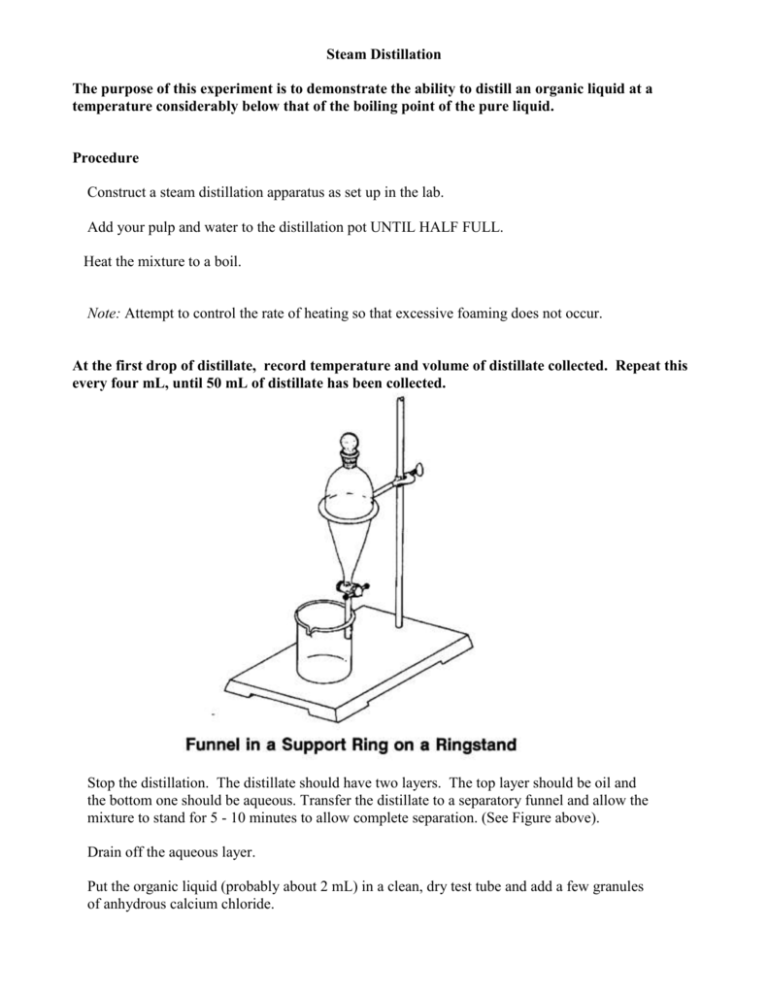
Steam Distillation The purpose of this experiment is to demonstrate the ability to distill an organic liquid at a temperature considerably below that of the boiling point of the pure liquid. Procedure Construct a steam distillation apparatus as set up in the lab. Add your pulp and water to the distillation pot UNTIL HALF FULL. Heat the mixture to a boil. Note: Attempt to control the rate of heating so that excessive foaming does not occur. At the first drop of distillate, record temperature and volume of distillate collected. Repeat this every four mL, until 50 mL of distillate has been collected. Stop the distillation. The distillate should have two layers. The top layer should be oil and the bottom one should be aqueous. Transfer the distillate to a separatory funnel and allow the mixture to stand for 5 - 10 minutes to allow complete separation. (See Figure above). Drain off the aqueous layer. Put the organic liquid (probably about 2 mL) in a clean, dry test tube and add a few granules of anhydrous calcium chloride. Measure the volume of the organic liquid (now dry). Draw a Temperature vs Volume graph of your lab data in your lab report. Test for unsaturation (multiple bonds between two carbon atoms): a) Place one drop of cyclohexane in a depression of a white spot plate and add KMnO4 dropwise until a red-brown color persists for 30 seconds. b) Place one drop of your distilled oil in another depression of a white spot plate, and add KMnO4 dropwise until a purple color persists, or until you have added ten (10) more drops to it than you added to the cyclohexane. c) Record: . the number of drops used for cyclohexane . the number of drops for your oil, and whether or not a purple color was reached Turn in your product in an appropriately labeled narrow mouth bottle. ============================================== Disposal of Spent Orange Peel Construct a filtration apparatus as set up in the lab. Place the piece of cheese cloth provided into your Buchner funnel. Draw a vacuum on the funnel. Pour the contents of your 500 mL round-bottom flask into the cheese cloth, and allow the liquid to drain into the filter flask. Once the liquid has been suctioned from the orange peel, discontinue vacuum and throw the cheese cloth into the trash. ============================================== Che 301 Su’2003 Lab Data Sheet Title: Steam Distillation Name: Date: Lab Data Appearance of the liquid ( circle the appropriate description(s) ) Colorless color cloudy clear other comments Volume of Liquid Used: mL. Temp. at which first drops enter the receiving vessel: o C Volume/Temp Data 4 8 Vol (mL) 12 16 20 24 28 32 36 40 44 48 52 56 Temp (oC) Volume of total distillate Recovered: mL. Volume of organic compound recovered: mL. . the number of drops of KMnO4 used for cyclohexane . the number of drops for your oil, and whether or not a purple color was reached (Y/N) Che 301 Su’2003 Lab Report Title: Steam Distillation Name: Date: Results:(Draw Temp. vs Volume Graph) Deg C 130 120 110 100 90 80 70 60 50 40 30 Volume (mL) Convert the volumes of water and compound to moles utilizing the information provided Constituent Molecular Weight (gm) Density (g/mL) Water 18 1.00 Citral 152.24 0.888 moles organic component = In addition to the information asked for in the procedure, calculate the percent recovery in mL/l00gm of starting material. Assume that the rind of six oranges weighs 80.0 gm. Conclusion
